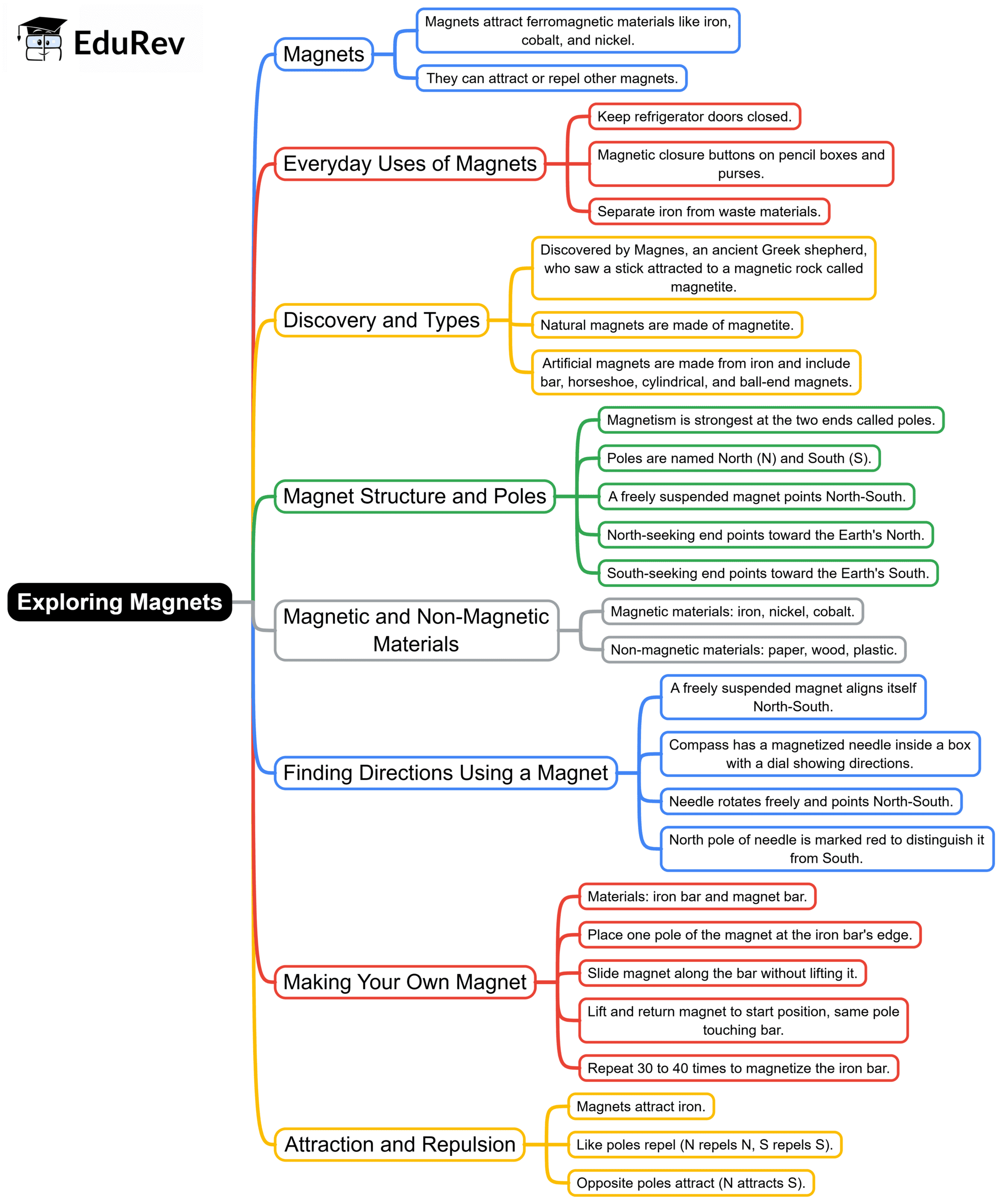Class 6 Exam > Class 6 Notes > Science Olympiad Class 6 > Mind Map: Exploring Magnets
Mind Map: Exploring Magnets | Science Olympiad Class 6 PDF Download

The document Mind Map: Exploring Magnets | Science Olympiad Class 6 is a part of the Class 6 Course Science Olympiad Class 6.
All you need of Class 6 at this link: Class 6
|
70 videos|150 docs|104 tests
|
FAQs on Mind Map: Exploring Magnets - Science Olympiad Class 6
| 1. What are the basic properties of magnets? |  |
Ans. Magnets have several basic properties: they attract certain metals, such as iron, nickel, and cobalt; they have a north and a south pole; and opposite poles attract while like poles repel. Magnets can also produce a magnetic field around them, which is the invisible area where magnetic forces can be felt.
| 2. How do magnets work? |  |
Ans. Magnets work due to the alignment of atoms within the material. In magnetic materials, the electrons' spins and orbits create tiny magnetic fields. When a significant number of these tiny fields align in the same direction, the material becomes magnetized and can attract or repel other magnetic materials.
| 3. What are the different types of magnets? |  |
Ans. There are several types of magnets, including permanent magnets, which maintain their magnetism over time; temporary magnets, which only act as magnets when in a magnetic field; and electromagnets, which are created by running an electric current through a coil of wire. Each type has unique applications based on its properties.
| 4. What is the significance of magnetic poles? |  |
Ans. Magnetic poles are significant because they determine how magnets interact with each other. The north pole of one magnet will attract the south pole of another, while the north poles will repel each other. This property is crucial in many applications, including motors, generators, and magnetic compasses, which rely on the behavior of these poles.
| 5. How are magnets used in everyday life? |  |
Ans. Magnets are used in various everyday applications, including in refrigerators to keep doors closed, in credit and debit cards for storing information, in speakers and microphones to convert sound into electrical signals and vice versa, and in medical equipment like MRI machines, which use strong magnets to create images of the body.
Related Searches




















